It’s no secret that stucco homes have had a ton of water problems during the last few decades. This all started here in Minnesota at the end of the 1980s, but it’s not just a Minnesota thing. Newer stucco homes have had catastrophic failures all over the country, and we’re still discovering problematic homes on a daily basis throughout Minnesota.
A lot of people here in the Twin Cities believe this was an issue with Woodbury homes, but Woodbury was simply the one city who was bold enough to put out a position paper questioning the viability of stucco. Make no mistake, this is not a Woodbury problem. It’s all over.
Side note: anyone buying a newer stucco-clad home ought to read Woodbury’s position paper: https://structuretech.com/wp-content/uploads/2021/04/StuccoPositionPaper.pdf.
It’s not about synthetic stucco
This problem isn’t about synthetic stucco. I bring this up because I’ve heard homeowners and contractors defend their untested homes, proudly stating the fact that this house has “Real stucco. Not that new synthetic stuff that had all of the problems.” I never know exactly what people are talking about when they refer to synthetic stucco, but I assume they’re talking about an Exterior Finish and Insulation System, or EIFS (pronounced the way it’s spelled, it rhymes with reefs). EIFS was basically a thin coat of mortar on top of foam insulation, and it’s extremely unusual to find that stuff in residential construction in Minnesota. Just about all of our residential stucco is the traditional, three-coat stucco that people like to thump their chest over. Yep, that’s the stuff we find problems with.
Why all of the problems? You can’t just blame one thing. There were a lot of small changes that happened during a small period of time, and these all made for major changes to the performance of stucco-clad wall assemblies. For an excellent write-up on the matter, check out Stucco Woes-The Perfect Storm, from Dr. Joseph Lstiburek. While Dr. Lstiburek says this isn’t the architects’ fault for creating “complicated building syndrome”, I’m not so forgiving. I blame the rampant failures on design just as much as anything else. When you have huge overhangs and protected walls, the walls don’t fail. Check out my home inspector training video on that topic. You don’t have to watch the whole thing, just the part starting at 4:10 and going on until about the 25:40 mark. Or until you really, really, really get it.
It’s not only about stucco, either
Stone veneer siding looks quite different from stucco, but from a performance standpoint, it’s stucco’s ugly step-brother. Stone veneer is a reservoir cladding that’ll hold water against the side of your house like a sponge. Not that there’s anything wrong with that. And I sincerely mean that. It’s only a problem when it’s not installed properly… and unfortunately, it’s usually installed improperly.

Damaged Homes
When water leaks into these stucco or stone veneer homes and reaches the wood framing, things stay wet for a long time, and major damage occurs. I posted a three-part series about repairing stucco homes many years ago, which you can find in these links: stucco repairs part 1, part 2, and part 3.
What’s really fascinating, however, is the damage that happens to these stucco homes over time. The photos below tell the stories quite well.
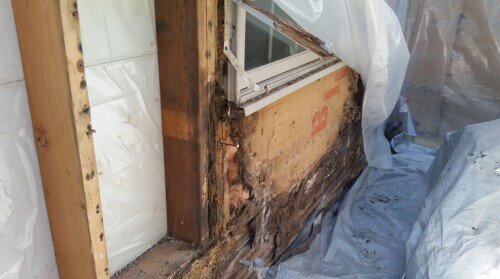
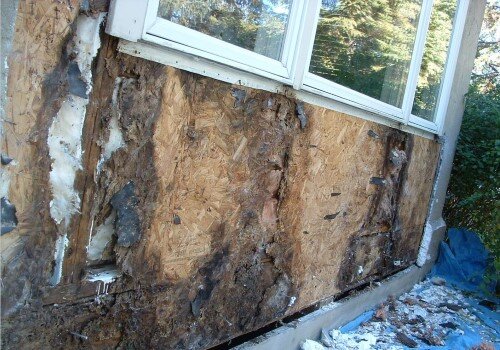
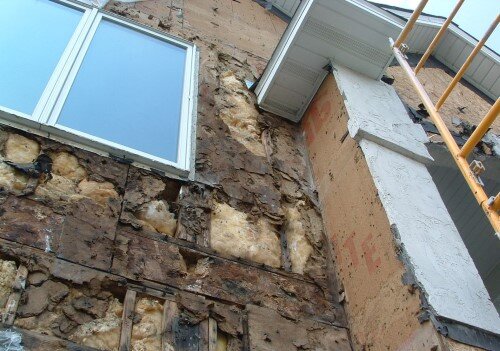
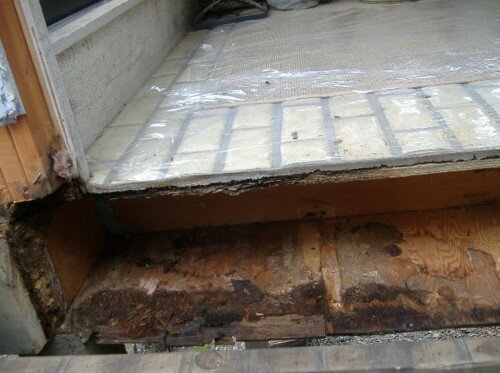
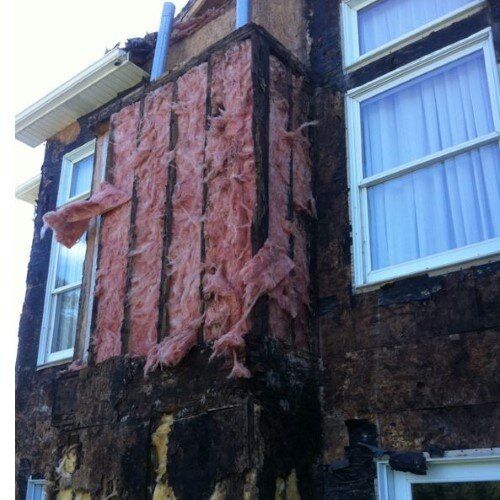
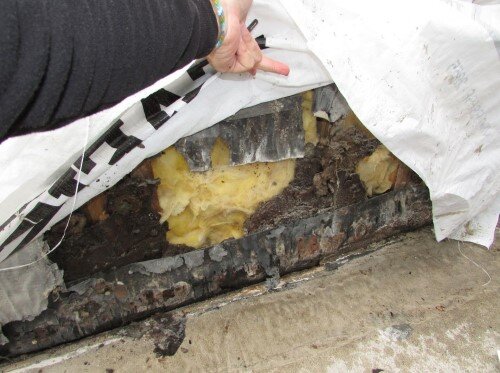
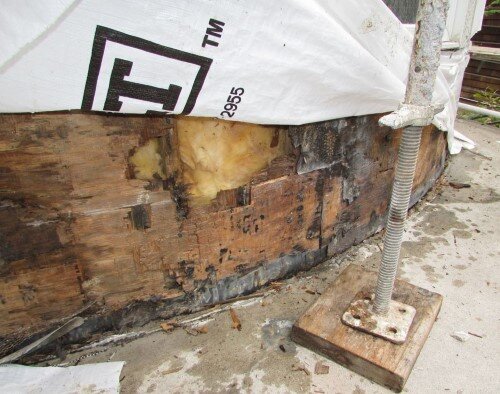
You can’t see the problems
Here at Structure Tech, we’ve tested thousands of stucco-clad homes, and we know from experience that there is no way to determine if a wall is leaking or not unless it gets tested. The most important takeaway from all of the photos that I just posted above is that these houses always look fine. We call this concealed damage because it’s concealed. There is usually no visible evidence of this kind of damage.
The only way to be 100% sure of finding this type of damage (or lack of damage) is to cut holes in the walls and check them out. But that never happens. Nobody is ever cool with someone putting a bunch of holes in their walls… at least not until you have cause to do so.
Intrusive Moisture Testing
The next-surest thing to actually viewing the wall is intrusive moisture testing. This consists of drilling pairs of 3/16” holes in stucco at strategic locations, inserting a moisture probe into the wall, and taking a reading of the moisture content of the wall sheathing. If the wall sheathing is dry and firm, that’s good. If the wall sheathing is wet, soft, or missing, further inspection and repairs are needed.
For more information about the entire process of moisture testing a home, check out the moisture testing page on our website. You’ll find a long list of FAQs about moisture testing, a sample moisture testing report, and a discussion of why other less-intrusive methods of moisture testing have proven to be ineffective.

